【七】springboot整合AOP实现日志操作
介绍:接下来我会把学习阶段学到的框架等知识点进行整合,每一次整合是在前一章的基础上进行的,所以后面的整合不会重复放前面的代码。每次的demo我放在结尾,本次是接着上一章的内容延续的,只增加新增的或者修改的代码。 上一章进行了Redis的整合,实现了一个用户对应一个token,用户登录失败次数锁定。 本章将整合AOP,实现请求接口后,对日志进行处理,不直接写到逻辑里面,尽量解耦,采用切面方式。
首先展示下我的目录结构:
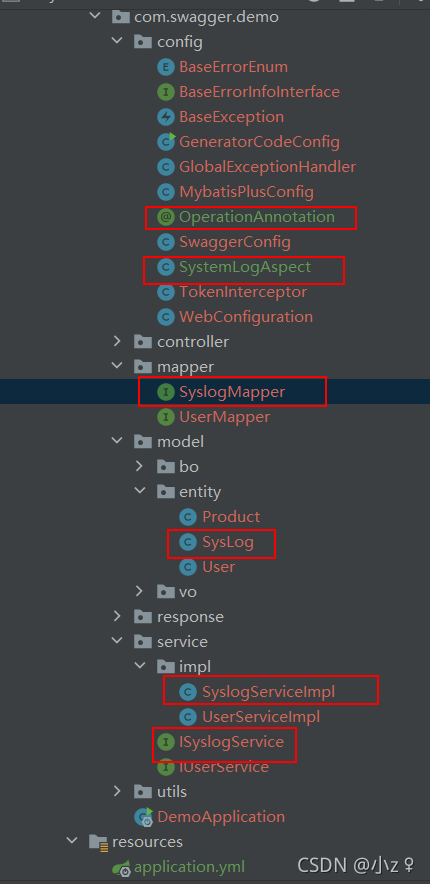
勾选部分为本章整合后新增部分代码。
第一步:新增日志实体类
@Data
@TableName(value = "syslog")
@Accessors(chain = true)
public class SysLog {
private static final long serialVersionUID = 1L;
@TableId(type = IdType.UUID)
private String id;//id
@TableField("operationUser")
private String operationUser;//操作人
@TableField("path")
private String path;//请求路径
@TableField("time")
private String time;//方法执行时间
@TableField("parameter")
private String parameter;//方法入参
@TableField("title")
private String title;//操作方法
@TableField("action")
private String action;//方法描述
@TableField("sysType")
private Integer sysType;//系统类型
@TableField("opType")
private Integer opType;//操作类型
public SysLog(String operationUser, String path, String time,
String parameter, String title, String action, Integer sysType, Integer opType) {
super();
this.operationUser = operationUser;
this.path = path;
this.time = time;
this.parameter = parameter;
this.title = title;
this.action = action;
this.sysType = sysType;
this.opType = opType;
}
}ps:此处所涉及的注解请不要漏写,关系到mybatis-plus的使用,此处id的自动设置不一定使用 IdType.UUID。 可以采用前面整合的代码生成器进行生成,我在此处就是使用代码生成器生成的,但是需要改进一些地方,不然会报错。
第二步:新增各层代码

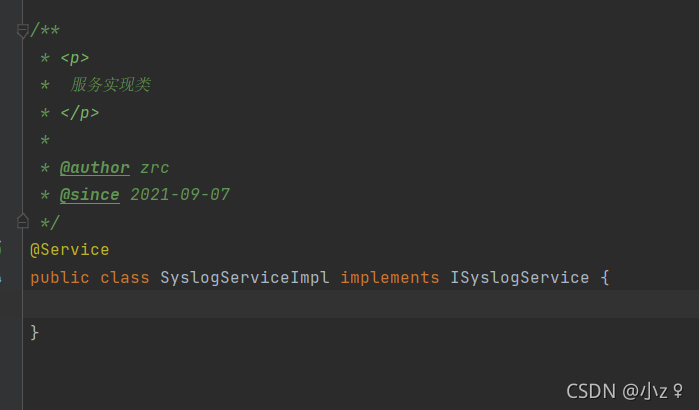
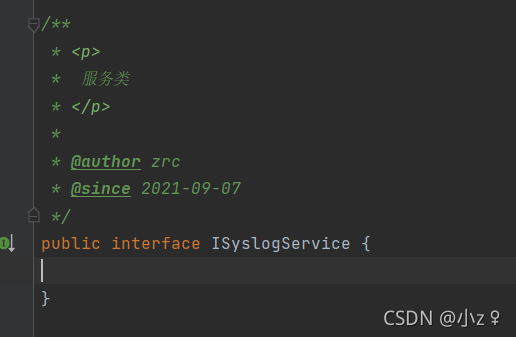
第三步:编写切面需要依赖的注解(次重点)

ps:自定义注解,需要加上框选部分的注解,里面参数的选择在csdn上面有大佬有细讲文章。
第四步:编写切面(重点)
@Aspect
@Component
@EnableAsync
public class SystemLogAspect {
@Resource
private SyslogMapper logMapper;//日志 mapper
private String requestPath = null ; // 请求地址
private long startTimeMillis = 0; // 开始时间
private long endTimeMillis = 0; // 结束时间
private String user = null; // 操作人
private HttpServletRequest request = null;//请求
/**
* 注解的位置
*/
@Pointcut("@annotation(com.swagger.demo.config.OperationAnnotation)")
public void logPointCut() {}
/**
* @param joinPoint
* @Description 前置通知 方法调用前触发 记录开始时间,从session中获取操作人
*/
@Before(value="logPointCut()")
public void before(JoinPoint joinPoint){
startTimeMillis = System.currentTimeMillis();
}
/**
* @param joinPoint
* @Description 获取入参方法参数
* @return
*/
public Map<String, Object> getNameAndValue(JoinPoint joinPoint) {
Map<String, Object> param = new HashMap<>();
Object[] paramValues = joinPoint.getArgs();
String[] paramNames = ((CodeSignature)joinPoint.getSignature()).getParameterNames();
for (int i = 0; i < paramNames.length; i++) {
if(paramValues[i] instanceof Integer || paramValues[i] instanceof String) {
param.put(paramNames[i], paramValues[i]);
}
}
return param;
}
/**
* @param joinPoint
* @Description 后置通知 方法调用后触发 记录结束时间 ,操作人 ,入参等
*/
@After(value="logPointCut()")
public void after(JoinPoint joinPoint) {
request = getHttpServletRequest();
String targetName = joinPoint.getTarget().getClass().getName();
String methodName = joinPoint.getSignature().getName();
Object[] arguments = joinPoint.getArgs();
Class<?> targetClass = null;
try {
targetClass = Class.forName(targetName);
} catch (ClassNotFoundException e) {
e.printStackTrace();
}
Method[] methods = targetClass.getMethods();
String title;
String action;
Integer sysType;
Integer opType;
Class<?>[] clazzs;
for (Method method : methods) {
if (method.getName().equals(methodName)) {
clazzs = method.getParameterTypes();
if (clazzs!=null&&clazzs.length == arguments.length
&&method.getAnnotation(OperationAnnotation.class)!=null) {
request = getHttpServletRequest();
requestPath=request.getServletPath();
HttpSession session = request.getSession();
user = session.getAttribute("userName").toString();
title = method.getAnnotation(OperationAnnotation.class).content();
action = method.getAnnotation(OperationAnnotation.class).action();
sysType = method.getAnnotation(OperationAnnotation.class).sysType();
opType = method.getAnnotation(OperationAnnotation.class).opType();
endTimeMillis = System.currentTimeMillis();
SysLog log=new SysLog(user, requestPath,
(endTimeMillis-startTimeMillis)+"ms",
getNameAndValue(joinPoint).toString(), title, action,sysType,opType);
System.out.println("增加参数:"+log);
logMapper.insert(log);
// break;
}
}
}
}
/**
* @Description: 获取request
*/
public HttpServletRequest getHttpServletRequest(){
RequestAttributes ra = RequestContextHolder.getRequestAttributes();
ServletRequestAttributes sra = (ServletRequestAttributes)ra;
HttpServletRequest request = sra.getRequest();
return request;
}
/**
* @param joinPoint
* @return 环绕通知
* @throws Throwable
*/
public Object around(ProceedingJoinPoint joinPoint) throws Throwable {
return null;
}
/**
* @param joinPoint
* @Description 异常通知
*/
public void throwing(JoinPoint joinPoint) {
System.out.println("异常通知");
}
}ps:下面对该切面进行一个解释。

aspect注解表示将该类定义为切面。component注解表示将该类注册到spring容器。

pointcut注解表示定义切入点,此处表示,切入到 OperationAnnotation注解的位置,定义切入点的参数特别多,可以去细细了解一下。

before注解表示前置通知,相当于BeforeAdvice的功能,value的值为切入点的名字。

此方法是获取方法的入参。
after注解表示后置通知,即使切入点注解切入位置执行完之后执行该部分代码。此处从session里面获取当前用户,表示日志的操作人(在登录时将用户名存入session),实际使用也可以采用其他办法。
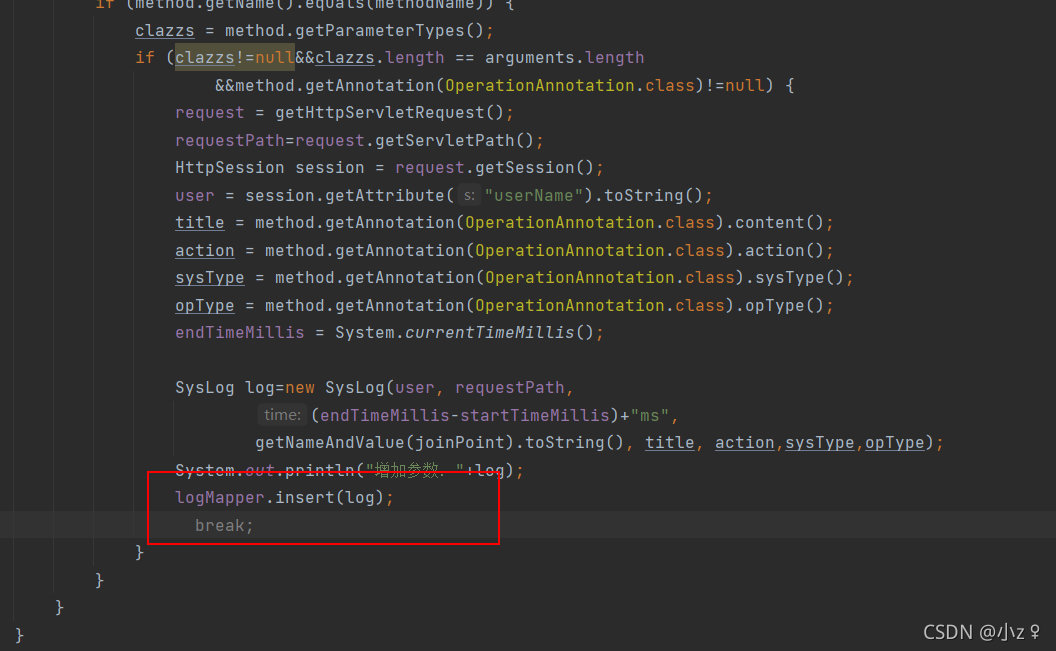
使用mybatis-plus的insert方法直接新增的记录,也可以自己写sql。
补充:改造了一下登录接口,登录成功后报错了用户名到session,如下。
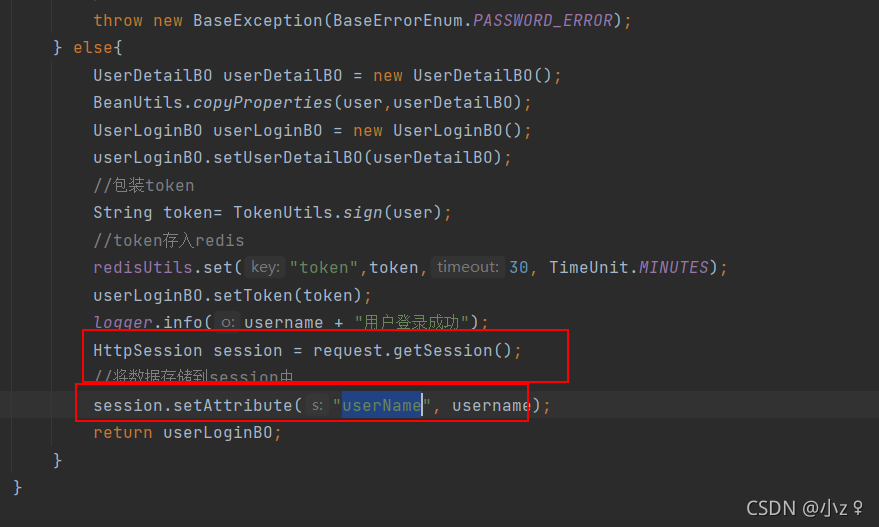
ps:使用session需要在入参处加上HttpServletRequest request。

从登录的controller方法到实现类都需要加上该入参。
第五步:演示
请求登录接口
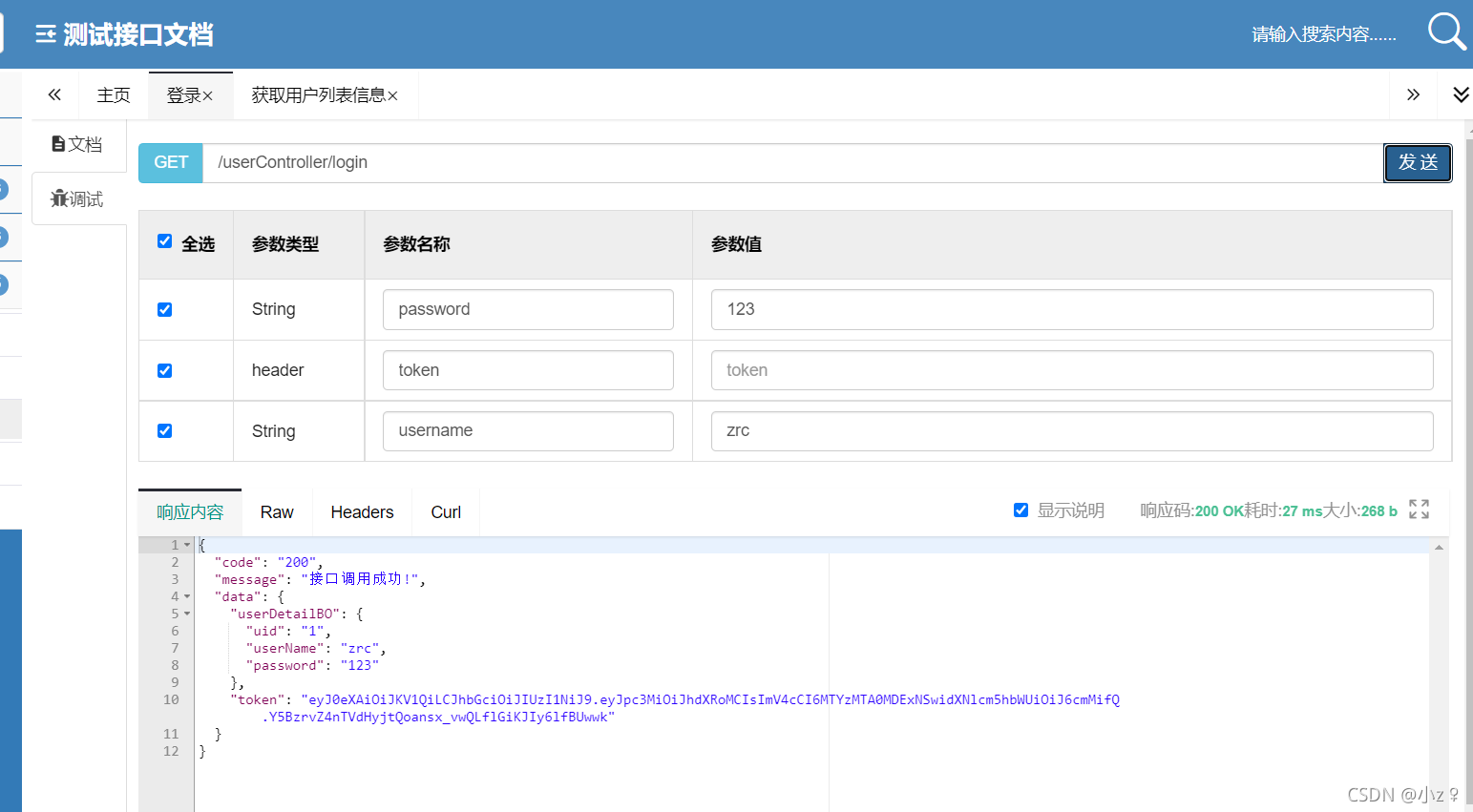
结果:

已经新增成功。
本期整合到此完毕,接下来会继续更新加强整合,尽情期待。
访问地址:http://localhost:8088/swagger-ui.html或者http://localhost:8088/doc.html
本文参与 腾讯云自媒体同步曝光计划,分享自作者个人站点/博客。
原始发表:2024-03-10,如有侵权请联系 cloudcommunity@tencent.com 删除
评论
登录后参与评论
推荐阅读
目录


